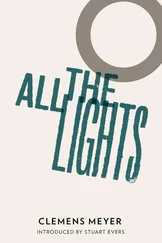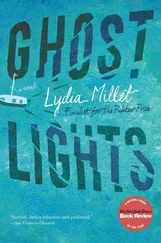Father Kalvos dropped Sister Anna at the Department’s complex at the foot of the mountain. We three sat in the coffee room over steaming cups, surrounded by posters depicting the island’s fauna and flora and dire notices warning travellers against too close a familiarity with them. I congratulated myself that my Greek was now good enough to hear that Sister Anna was not yet a fluent speaker. She seemed nervous, and that was out of character. Her sparing smile appeared to result more from inner musings than the events around her. She reminded me of a philosophical prisoner being introduced to her cell. I thought of making a joke about it until it struck me that that was precisely what she was about to become. Never had my self-restraint been so tested as on that occasion.
Father Kalvos said, ‘Sister Anna tells me she is used to being alone, but I have told her she must signal to us if ever…’ He paused, choosing his next words carefully, ‘…it becomes difficult to cope. After all, Sister Maria and Sister Helena have been alone together for many years and the parting will be difficult for both of them. Hard as I tried, it was impossible to persuade Sister Maria to come down from the mountain.’ Then he whispered so that only I should hear, ‘There is no longer a need for a religious house up there.’
Sister Anna looked at me and said, ‘Father Kalvos has lectured to me on horticulture and, look, even given me some seeds to plant.’ As she spoke I saw wrinkles at her eyes: tiny crow’s feet from stress and sleepless nights that I had never seen before.
My unstifled expression of surprise must have worried her. She looked anxiously towards Father Kalvos to see if he had noticed. But he was studying the mountain through the window and concern for his charges was all I could see written on his face.
We walked together to the helicopter. Father Kalvos and Sister Anna said little to one another but perhaps they had already made their farewells. I stowed her suitcase and noted its lightness relative to its size. Then I saw she was watching me, and again there was that transient nervous smile. Throughout the flight Sister Anna looked out, across the sea, to the storm clouds that were gathering over the Turkish coast.
From a long way off we could see Sister Maria on the landing pad and, beside her, Sister Helena in her wheelchair. Closer, we saw that they were clasping each other’s hands. They continued to do so until the moment when Father Kalvos and I lifted Sister Helena into the helicopter.
Sister Maria would not let me accompany them to the building. ‘Your responsibility is to Sister Helena,’ she said. If she recognised me she gave no sign of it.
As they were walking away Sister Anna turned. ‘How often will you come?’ she asked.
‘As often as I’m needed,’ I replied.
They were the only words she spoke to me. Our second parting had been no easier than our first.
In the weeks that followed I had no further contact with the monastery. On the rare occasions I flew nearby nothing moved. I had no excuse to visit, and there was no invitation to do so, though I held myself in readiness. Easter passed. The bright sunshine – others might have supposed – led me to the path up the mountain. High up the season started later and the garden was still forlorn. I walked slowly, the better to scrutinise the buildings. The few windows that were not shuttered were dirty and lifeless. I continued on, past the helicopter landing pad and up the path to the summit of the mountain. It was a risky strategy but one for which I saw no alternative.
From the summit the other islands were black shark fins in an infested and darkening sea. When the sunlight finally left the tip of the mountain like an extinguished flame I set off back down the track, knowing that no other walker would have ventured to remain here so late. If all else failed I could lay out my sleeping bag in the wood-store, or even in one of the sheds that housed the garden implements. A lost traveller – especially one as foolish as me – would be believable.
I was in luck. The door from the terrace was not locked – but then what need was there for security? My overshoes were quite silent on the flagstones of the corridor as I made for the chapel. I listened at each of the doors as I passed, watched by the suspicious eyes of erstwhile saints in the faint candlelight. The door to the chapel was ajar, just as we had agreed it should be.
In the light of a single candle, even from the side, her drawn features were plain to see. When she turned the relief we saw in each other’s face nearly made us cry. We realised the fulfilment of our dream was almost within our grasp.
‘It’s all right,’ she whispered, ‘she sleeps till four and is very deaf – so often have I put that to the test.’
‘Have you found it?’ I asked.
‘Yes,’ she replied, ‘but I’ve left it hidden in one of the caves.’
‘So can we agree a day?’
‘Yes, yes, please,’ she replied, with tears trickling down her cheeks.
I had no qualms about violating the sanctity of the chapel. It was not until much later that I pressed the small vial of sedative into her hand.
I waited until two, then crept out of the building to the wood-store, where I sat contemplating the grey mass of the mountain rising almost sheer above me. When the first rays of the sun illuminated the summit, so that within minutes it became a great pyramid of golden light, I began my descent of the path.
No-one could quite remember the sequence of events the following Thursday. Some said that Sister Maria had signalled with the torch that was trained on the police station four miles away on the coast. Others, who had been walking on the mountain, claimed that they alone carried the information Sister Maria had given them. Whichever it was, it was clear by the evening that Sister Anna had disappeared.
The following day, and the days after, rescue teams fanned out across the mountain but found no trace of her. Except that, on the Friday, a climber came upon her light cotton shawl on a stunted bush near the summit of the mountain. Those that saw no relevance in this were outnumbered. Sister Anna had scaled the mountain. And when those who were so inclined saw the date – Ascension Day – the explanation became clear. She had been ‘taken up’.
It was probably a rash thing to do, but the following Tuesday I, along with a dozen others, climbed the path to the monastery. I left them there with Sister Maria holding court behind a vast tray of dry crusts. I skirted the end of the chapel and made for the landing pad. It was curious the police had not thought to look there when they first arrived; or, if they had, then not carefully enough. There was not much to see after both our helicopters had been there but if you counted the impressions there was still enough to incriminate. Putting on my overshoes – for which I had no further use – I trampled the ground until no signs remained. No one, it seemed, had heard us, or seen the lamp that had guided me in as darkness fell on the Wednesday evening.
The Codex Kusadasiensis – as the earliest extant copy of the Bible is now known – first emerged a year later in the premises of a dealer in antiquities in the little town of Kusadasi, on the Turkish coast. It was part of a miscellany of documents that an intermediary, acting in secret on our behalf, had randomly assembled so that no particular origin could be ascribed to it. At the auction in Paris the bidding was intense, but in the end it went to the Metropolitan Museum of New York for a formidable sum, in spite of its uncertain provenance.
From time to time my wife – whose real name, incidentally, is not Anna but Lianne – and I spend long weekends in that city. We often stay at the Ritz or the Astoria, but we always go to see the codex. Alongside it in the display case is a photograph of the dealer’s house where it first came to light. If you look carefully you can see, in the distance across the channel, the mass of Mount Vathos and its shining white peak. With a magnifying glass – and we really did try this once – you can make out the green and white spot towards the summit that is Moni Agiou Ioanni. Of course, the geography doesn’t wholly explain why we searched for it there but, sipping coffee in Lianne’s Washington study, which we do from time to time under her treatises on biblical archaeology, we congratulate ourselves on having chosen it as the place to start. Hanging on Anna’s wall beside her nun’s habit is an interesting framed composition that our guests invariably assume, erroneously, to be by one of our less comprehensible contemporary graphical artists. We still have to decide when it will be safe to explain that it represents the system of caves and chambers under the chapel of the monastery.
Читать дальше












